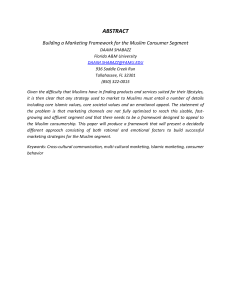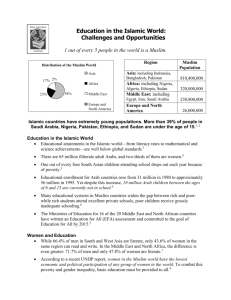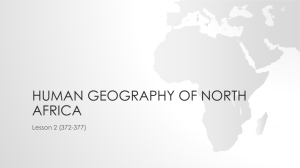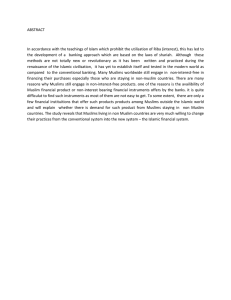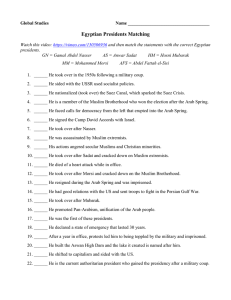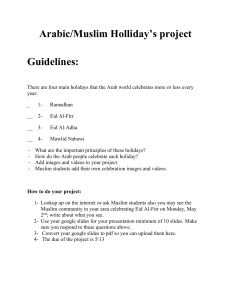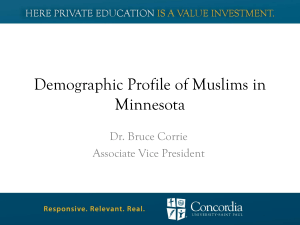HIST 2805 -- History of Islamic Civilization
advertisement
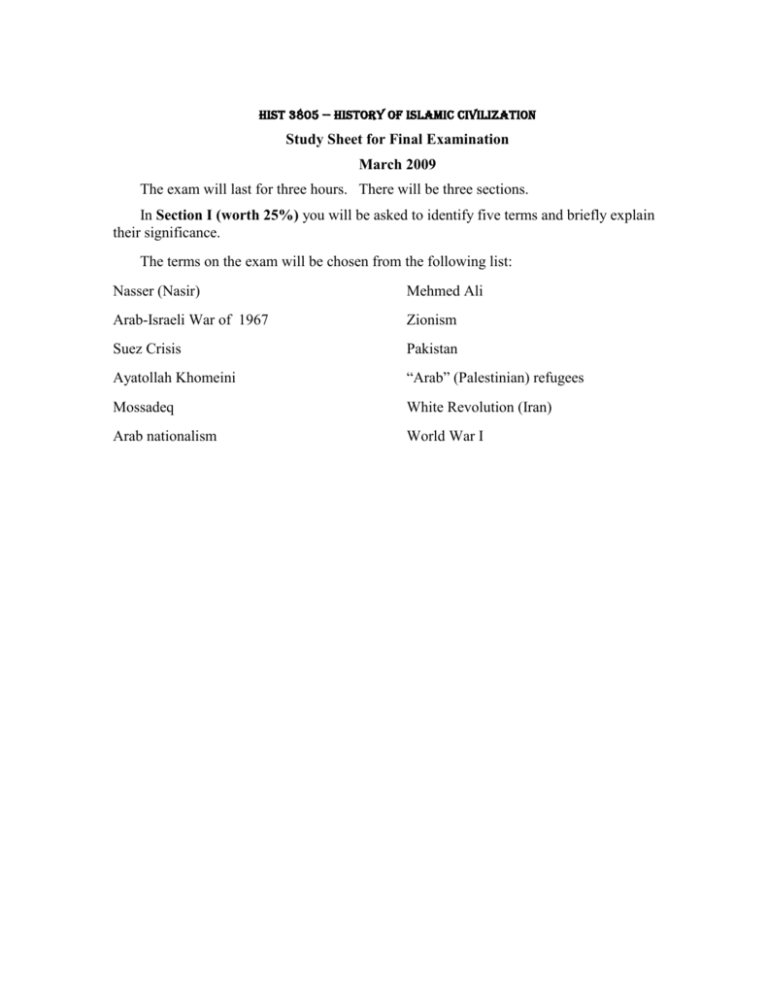
HIST 3805 -- History of Islamic Civilization Study Sheet for Final Examination March 2009 The exam will last for three hours. There will be three sections. In Section I (worth 25%) you will be asked to identify five terms and briefly explain their significance. The terms on the exam will be chosen from the following list: Nasser (Nasir) Mehmed Ali Arab-Israeli War of 1967 Zionism Suez Crisis Pakistan Ayatollah Khomeini “Arab” (Palestinian) refugees Mossadeq White Revolution (Iran) Arab nationalism World War I In Section II (worth 37.5%), you will be asked to write an essay. Your choices of topic will be drawn from the following list: 1. Explain what “secularism” or “modernism” has meant to reformers in the recent history of the Muslim world. Give some specific examples of “modernist” reforms. Why have such ideals failed to satisfy many people? 2. The Arab countries, like Islam as a whole, are politically divided even though many people believe that they should be united. Focusing on the twentieth-century situation, why has the Arab Middle East remained divided despite so many calls for unity? 3. Ataturk was perhaps the most successful and radical ruler of a Muslim country during the period between the two World Wars. In what ways was he radical? Why and to what extent was he successful? Why has his approach not been more imitated? In Section III (worth 37.5%), you will be asked to write an essay. Your choices of topic will be drawn from the following list: 1. Why has the situation of Palestine been such a symbolic issue for Arabs and Muslims in the modern period? What is it a symbol of? Why have Arabs or Muslims been unable to work together to resolve that issue? 2. Explain the success of the Islamic forces led by Khomeini in overthrowing Shah Muhammed Reza of Iran and replacing his regime with an Islamic Republic. What has this success meant for politics in the rest of the Muslim world? 3. Discuss one element (your choice) of the controversy about the role of women within 20th-century Muslim societies.
